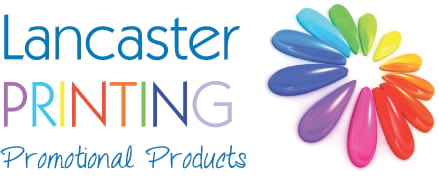Getting your message just right is always a bit of a challenge, particularly when space is limited. Therefore, working with promotional products can be tricky. Here are our top five tips for crafting your message when space is limited.
1. The Product
The promotional product itself will affect your message. For example, you can add significantly more text and images to a car window sticker than to a wristband. The more limited the space the more you have to make every work and image count.
Firstly, eliminate any unnecessary words. Think about removing adjectives and adverbs. Get straight to the point. Be direct.
Use the active voice instead of the passive voice. Not only is this likely to reduce your word count, and therefore save on space, but your writing will be more engaging and persuasive. In case you need a reminder, the cat chased the ball is active. The ball was chased by the cat is passive.
2. What is the Purpose of the Product?
What are you trying to achieve with the product? This will have the greatest impact on your message. For example, if you’re purchasing silicone wristbands to be handed out at a university open day, your purpose is likely to be to create a lasting impression and to encourage potential students to enrol. Therefore, you may wish to include a small logo, name and a prominent telephone number to make it as easy as possible for students to contact you. Or, you may wish to direct them to a landing page with a registration form.
Think carefully about the next step. What do you want the end user to do? Do you want them to sign up? Make a purchase? Think carefully about your call to action.
If the purpose of your product is to create awareness of a brand then the imagery is likely to be key and you may wish to focus on artwork and design.
3. Who is the Product Aimed At?
Your target audience will affect all aspects of the message including the design, colour and text. It is important to tailor your message to your intended audience. Is your audience male or female? What is their age range? Are they businesses or individuals? Are they hobbyists or sports fans? Gather as much research as you can on your intended audience so you can tailor content to their needs.
4. How will the Product be Used?
Before creating your message, ask yourself how the product will be used. If your product is going to be worn, (e.g. wristbands or headbands) then the focus should be on the design, colour and imagery. Think about what colours/imagery is favoured by your intended audience. Getting this right will encourage repeated use and will increase brand exposure.
If the product is a functional everyday item, such a trolley token or travel card holder, then displaying contact details will be important. The idea is to put your brand in front of your intended audience each time they use the product.
5. Where will the Product be Used?
Where will your intended audience see or use the product? At a conference, on the street, at a sports event or in their own home? If you’re displaying a flag at a conference or convention then it’s a safe assumption that it is likely to be competing with other competitor flags and visual merchandising. So think carefully about how to make your flag stand out and attract attention.
If you’re displaying a flag outside a showroom where potential customers are walking or driving past, then text should be kept to a minimum. In this instance design and contact details will be the focus. Think carefully about placement before creating your message.
With over 15 years’ experience of working with promotional products, we can advise on everything from which products are right for you, to design and artwork, to getting the message right. To discuss your requirements in more detail, contact us on 01524 230 300 or at sales@lancasterprinting.co.uk.
[Image source: Stokkete, Shutterstock.com

















8 pings
Skip to comment form ↓
Silicone Wristbands: Their Popularity and Continued Appeal
December 22, 2016 at 4:16 pm (UTC 0) Link to this comment
[…] Crafting your message for such a small product can be a challenge but its succinct and targeted nature is highly effective. And due to the wearability of the bands, you can be sure of repeated exposure. […]
Everything You Need To Know About Promotional Products
July 9, 2017 at 6:48 pm (UTC 0) Link to this comment
[…] you will need to work out your message. What is it that you want to say? Some items, such as silicone wristbands, keyrings, trolley tokens […]
Colour, Message and Artwork | Styling your Silicone Wristbands
July 28, 2017 at 5:00 am (UTC 0) Link to this comment
[…] of these questions will help you to determine what to add. For more details, read our guide on crafting your message. When you have a relatively small space to work with, it is important to make every word […]
Promotional Products: Getting Started and What to Ask
August 16, 2017 at 5:34 am (UTC 0) Link to this comment
[…] tokens only have a small space on which to convey your message. Therefore, every word counts. Our article on crafting your message provides useful information. Of course, not all messages are conveyed by […]
Customer Questions: Where To Find Advice On The Website
March 20, 2018 at 8:37 pm (UTC 0) Link to this comment
[…] This is another common question. We have put together a handy guide on writing enticing copy to fit onto small products and create impact and interest. You can read it here. […]
Integrate Promotional Products into Your Marketing Campaigns
March 17, 2019 at 4:04 pm (UTC 0) Link to this comment
[…] Messages are conveyed on promotional products, no matter how small. Where space is limited, for example on silicone wristbands, the words you choose are even more significant. […]
Selecting Promotional Products That Will Deliver ROI
December 7, 2019 at 2:58 am (UTC 0) Link to this comment
[…] contain a clear call to action and make it easy for recipients to get in touch. Our article on Crafting Your Message provides further […]
Silicone Wristbands | Their Uses as a Promotional Tool
February 20, 2021 at 12:20 pm (UTC 0) Link to this comment
[…] make them visually appealing, eye catching or instantly recognisable. They use font, colour and messages to good effect. This is turn makes the end user more likely to wear them […]